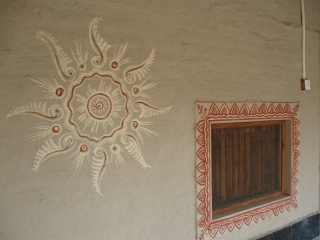How does this figure in the context of Ananda Niketan? How are textbooks used in Ananda Niketan?
Sushma Sharma: I wouldn’t say that using a single textbook is very beneficial. But since our children come from a lower socio-economic group, they can have more (access to) state textbooks. We have Marathi as a medium of instruction, we have taken (the) SCERT curriculum to be something which all our children should learn. Also if a child wants to change his or her school, they should not face any kind of problem because of that (our not using state textbooks).
However, the way we deal with the curriculum is altogether different. Our children have a set of SCERT books. But our teachers have multiple textbooks. And teachers can refer (to) all. For example, we have Eklavya textbooks, we have Homi Bhabha Small Science textbooks (and) Mathematics textbooks, we also have NCERT textbooks (and) ICSE textbooks. So the teacher can look into all such kinds of textbooks. We also have a good library where teachers can go through and look for resource material, and also can develop her or his understanding to a higher level.
If it is (Indian) Independence that is being taught, for example, then the teacher has to know much more than children have to know; and they also have to be familiar with different perspectives – analytical perspectives, critical perspectives – of looking at Independence; and the dynamics – social dynamics that were going on in the country. That is why we have such kinds of books in the library – they help the teachers to equip themselves in a better way to teach the concepts.
You mentioned that the curriculum is tackled differently in Ananda Niketan. Could you briefly explain how?
Sushma Sharma: Let me give you an example. Our curriculum in (the) Maharashtra Board, in Class 4 and Class 5, talks much about farming and related things like monocots, dicots, why we need all, and why the quality of soil has to be taken care of, why organic matter is very important. All these concepts are given just in words, as a text. And this makes no sense to the child unless the child works in a farm and takes up different kinds of experiments and tries to learn from them.
So we club certain kinds of experiments and the experiences that can be gained through them, together. And the teachers come up with multiple experiences through which skill is built and concepts are built. The experiences also deal with social and economic issues related to farming. Environmental issues as well – related to overuse of pesticides and chemical fertilizers and how they are spoiling our water and poisoning our food and how it is affecting us on a large scale. And then, where does this profit go, finally? So even that economic side of agriculture, we make clear to them by inviting people to talk to children, by choosing some (newspaper) articles and then discussing these articles with the children.
And also taking up some of the other issues – like there are 32 thermal power stations that are going to come up in Wardha district – and what are these going to do? We in Vidarbha need very little electricity and our electricity need is already taken care of by whatever thermal power stations we already have. But still these new thermal power stations are going to come up. And why are they coming up? That is a relevant question because we don’t have coal in our area (which can power the thermal stations). However, we do have water. The power stations are going to use the water which was going to be for our farmers. So that water – which was very essential for agriculture – will be taken up by all these thermal power stations. And in some way, it will create a lot of ash and pollution in this area. So how is it going to help us? Moreover, it is taking up fertile land which is used for growing food.
So all these issues exist but many times, the way they work, things are not very transparent. For example – through middle-men farming land is purchased. Some people thus sell it at a cheap price. And when they are exposed to the idea that there is going to be a thermal power station – they also have their own ways (of knowing?) – and farmers who sell their land late, they get higher prices. So there is so much of non-transparent ways of dealing with farmers. They are told how they will benefit from the money. But money doesn’t help. They lose control over the natural resources. So we took our children to talk to these farmers – why they sell land and what kind of crisis they are going through because of low prices that they get for the farm products.
And all these issues are complicated issues – not because children can’t understand this or they cannot come to a certain level of understanding. Without thinking about something deeply we should not give all answers to the children, but children should be encouraged to understand the complexity of the situations and how issues evolve out of this. And we need to deal with these issues as a community – as a society – in order to have our own better ways of living. So conflicting interests that exist in the society – we expose children to them too. This is how, I would say, it’s an integrated way of learning – dealing with real issues, dealing with the societal issues (and) dealing with the issues of their own lives.
More information on the school can be found at http://www.nayeetaleem.org/
